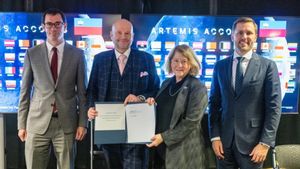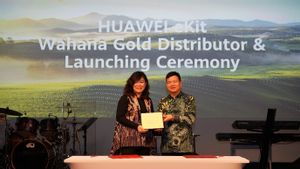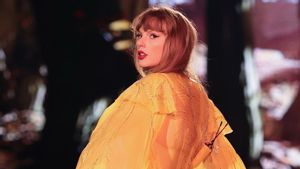YOGYAKARTA - photography technology is now growing with the presence of various advanced features. The photography service business is increasingly emerging. The photography trend with its various innovations comes thanks to the people who have contributed to developing camera technology. Of course, this cannot be separated from the history of the discovery of the first camera in the world.
The discovery of the world's first camera has a very long history. The camera has become one of the most important discoveries on earth. The presence of camera technology has helped the documentation needs capture important events or moments.
The camera is a device that works to shape and record a portrait image on the film sheet. In other terms, the camera can capture and freeze a moment or event into the form of a photo or visual image.
The camera continues to evolve from time to time. The discovery of the camera starts from a needle-hole camera, to develops into a more sophisticated form. Until now, camera technology has been implemented in electronic devices, such as smartphones, laptops, cctv, and others.
The world's first camera started in the 10th century by a Muslim scholar named Abu Ali Al-Hasan Ibk Al-Haytham or Alhazen. Alhazen is said to be the first person to learn the way the eyes work to see something.
The camera that Alhazen first created was a needle-hole camera. This camera is then known as an obscura camera. The work process of this camera is to use light to project images on flat surfaces.
Alhazen conducted a series of experiments on optics. He used the term Al-Bayt Al-Muthlim which means dark space. But Alhazen never admitted that he was the first camera inventor.
Researched further, the camera's initial idea was outlined by a Chinese philosopher named Mozi who lived during the Han Dynasty, which was about 391 years before the masehi. Another source also mentions the concept of an obscura camera to understand the optical principle had been written earlier by a Greek philosopher named Sacrina. The camera obscura principle was written by men in his book entitled Metaphysics.
The needle-hole camera works by capturing the shape of a natural optical phenomenon. Images seen from one side or on the screen are then projected through the hole to the surface opposite to the opening of the hole.
Projection from the needle will create an inverse image. So when someone sees the beam that shines into the hole it will appear a shadow image similar to the dark bedroom wall in a reversed position.
In the early stages of finding this camera technology has a sizeable shape. Even the size reaches the size of the house, making it difficult to move or bring it to another place.
The obscura camera principle thought of by my brother was then rewritten and in the 15th century. The camera technology of obscura is increasingly popularized by Leonardo Dagulisance during the time of Renaissance developing in Italy. Dawisa describes how the obscura cameras work in a large house with a dark atmosphere. It makes a pinhole or a small hole on the walls of the house.
The term camera obscura first appeared in the 16th century. However, at this time kamwera obscura was made using other additional materials, such as a special box that has an inverse projection image.
The difference between the obscura cameras and the needle is the use of the lens. Obscura camera technology is growing in the 17th and 18th centuries when artists use cameras to paint an object.
In 1872, the development of the first photographic image with an obscura camera was carried out by a French scientist named Joseph Nicephoto Niepce. This development was the beginning of the discovery of a permanent photographic image.
The development of a more practical photography concept was carried out by Joseph Nicephore Niepce in 1937. The innovation initiated by the French man was named the Daguerreletypes.
Josep initiated the Daguerroptypes with the concept of adding copper and silver plates in a small box in a light hole. The device is coupled with iodine vapor, making the camera at that time more sensitive to light.
The discovery of the Daguerroptypes was patented by Joseph and his partner named Louis Daguerre. After the presence of this camera technology, Henry Fox way then perfected the process of forming light. He managed to sell Calotype around the 1840s.
Dry plates or dry plates began to be used in 1857. This camera is the development of camera technology carried out by Desire van Monckobven. 14 years later, a dry plate camera was developed and modified by Richard Leach
The kodak camera was developed in 1885 by George Eastman. He started the production of camera films and re-developed them into celluloids in 1888-1889. This camera was introduced to the public in 1888. The kodak camera consists of only one focal lens and one shuttle speed or portrait lighter.
After kodak, the development of cameras by control Barnack at Leitz created a compact camera. Barnack made this technology using a 35mm film to create a compact camera. This camera is capable of producing image magnification with excellent quality.
Furthermore, the prototype camera Ur-Leica began to form in 1914. This camera began to be marketed in general in 1923. Next, a Canon camera emerged from the company in Japan. This camera is capable of creating a camera with a 35mm cinema film that is a rival to the Leica camera.
That is the historical information of the first camera in the world and the development of cameras from time to time. After the creation of the Compact and Canon cameras, new innovations of camera technology continue to emerge. Starting from SLR cameras, analog cameras, to digital cameras.
Stay up to date with the latest domestic and other overseas news on VOI. You present the latest and most recent nationally and internationally.
The English, Chinese, Japanese, Arabic, and French versions are automatically generated by the AI. So there may still be inaccuracies in translating, please always see Indonesian as our main language. (system supported by DigitalSiber.id)












